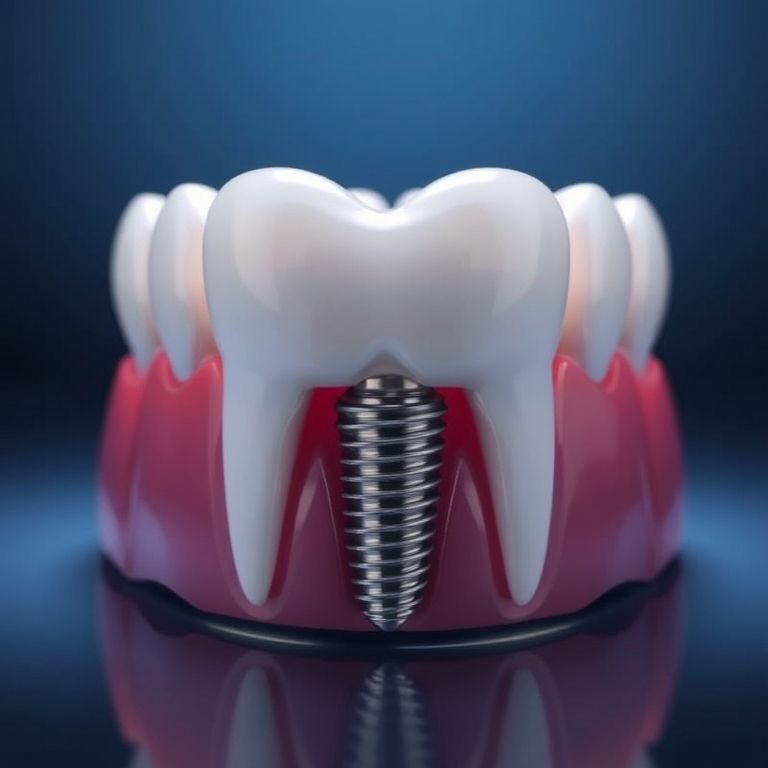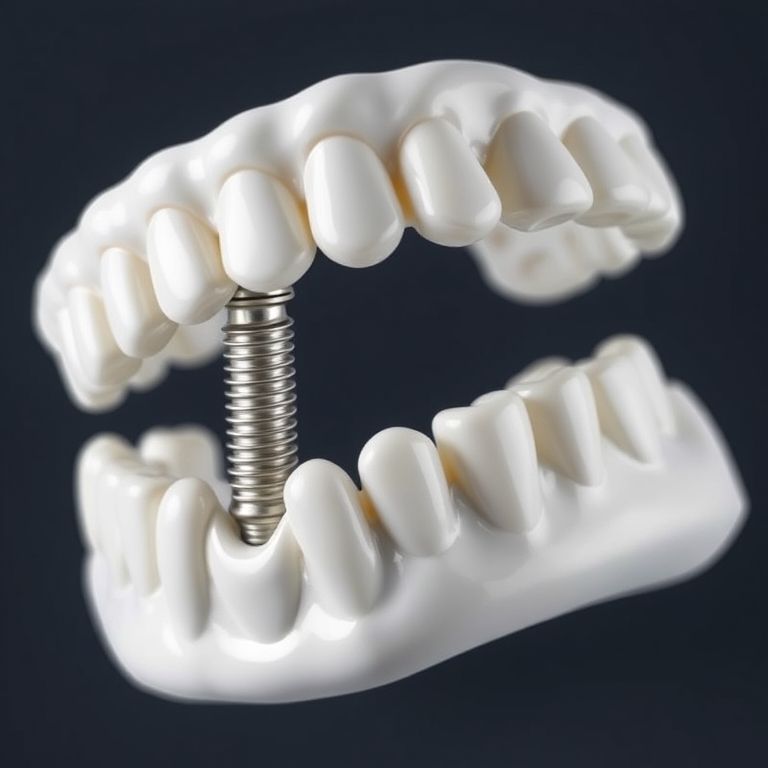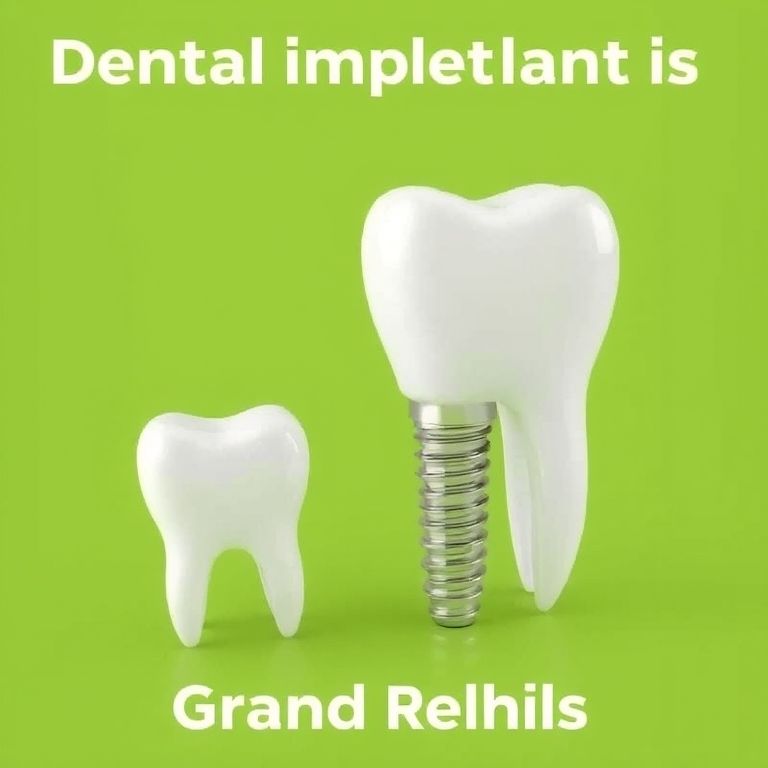the cost of dental implants in New Orleans
Picture this: you’re savoring a beignet at Café du Monde, the powdered sugar dusting your lips as you laugh with friends. Or perhaps you’re enjoying a po’boy, the crisp French bread giving way to flavorful shrimp and remoulade. In the vibrant tapestry of life in New Orleans—a city celebrated for its music, its food, and its joie de vivre—the simple, profound act of eating and smiling with confidence is a cornerstone of the experience. But for those living with missing teeth or unstable dentures, these moments can be shadowed by self-consciousness, discomfort, and limitation.
The decision to pursue dental implants is often born from a desire to reclaim these fundamental joys. While the initial question that arises is almost always, “How much do dental implants cost in New Orleans?”, this article aims to reframe that question. We will explore not just the price, but the value. The cost of a dental implant is not merely a fee for a product; it is an investment in a sophisticated, biological solution that restores function, preserves health, and revitalizes confidence for decades, potentially a lifetime. This comprehensive guide will serve as your definitive resource, demystifying every aspect of the financial commitment, explaining the “why” behind the numbers, and empowering you to make an informed decision for your health and happiness in the heart of Southeast Louisiana.

2. Understanding the Dental Implant: The Gold Standard of Tooth Replacement
Before we can intelligently discuss cost, we must first understand what we are paying for. A dental implant is not a simple plug-and-play tooth. It is a state-of-the-art bio-prosthetic device designed to mimic the natural structure and function of a tooth root.
The Three-Part System: Abutment, Fixture, and Crown
A traditional dental implant system consists of three distinct components:
-
The Implant Fixture (or Post): This is the part that is surgically placed into your jawbone. It is a small, screw-shaped post, typically made from commercially pure titanium or a titanium alloy. It serves as the new artificial “root” for your replacement tooth.
-
The Abutment: Once the implant fixture has fused with the jawbone, the abutment is attached to it. This is a connector piece that protrudes slightly above the gum line and provides a stable foundation for the final restoration.
-
The Dental Crown (or Prosthesis): This is the visible part of the tooth—the white, enamel-looking crown that is custom-crafted to match the size, shape, and color of your natural teeth. It is securely cemented or screwed onto the abutment.
Why Titanium? The Science of Osseointegration
The magic of dental implants lies in a biological process called osseointegration. Titanium is a unique material that is not only strong and lightweight but also biocompatible. This means the body does not recognize it as a foreign object and reject it. Instead, the bone cells in the jawbone actively grow, attach, and fuse with the microscopically rough surface of the titanium implant over a period of several months. This creates a bond that is as strong, if not stronger, than the original tooth’s root. This fusion is what provides the unparalleled stability and prevents the bone loss that typically follows tooth loss.
Dental Implants vs. Traditional Bridges and Dentures: A Comparative Analysis
To appreciate the value of an implant, it’s helpful to compare it to older, yet still common, tooth replacement options.
-
Traditional Fixed Bridge: To replace one tooth, a bridge requires grinding down the two healthy adjacent teeth to serve as anchors for a false tooth suspended between them. This compromises healthy tooth structure. The bone underneath the false tooth continues to resorb over time. A bridge typically lasts 7-15 years before needing replacement.
-
Removable Partial or Full Dentures: Dentures sit on top of the gums and are not fixed in place. They can slip, cause sore spots, and make eating and speaking difficult. Critically, they do nothing to prevent the jawbone from deteriorating, leading to a sunken facial appearance over time.
-
Dental Implants: They stand independently, do not require altering adjacent teeth, and through osseointegration, they stimulate the jawbone, preventing resorption. With proper care, they are designed to last a lifetime, while the crown may need replacement after 15-20 years.
3. The New Orleans Factor: How Geography and Culture Influence Cost
The cost of dental care is not uniform across the United States. Receiving treatment in a unique and sought-after city like New Orleans comes with its own economic realities that directly impact the price of sophisticated procedures like dental implants.
The Cost of Expertise in a Historic City
New Orleans is a regional hub for specialized medical and dental care. The implantologists, periodontists, and oral surgeons practicing here are often among the most highly trained in the region. This expertise commands a premium. A specialist invests significantly more in their education, with years of additional training beyond dental school, and they often handle the most complex cases. You are not just paying for a procedure; you are paying for their accumulated knowledge, skill, and judgment, which are critical for long-term success, especially in patients with compromised bone or complex medical histories.
Laboratory Fees and the Pursuit of Aesthetic Excellence
New Orleans has a distinct aesthetic, one that values beauty, artistry, and individuality. This ethos extends to dental restorations. The city’s top dental practices partner with elite dental laboratories, both local and national, that employ master ceramists. These artisans handcraft dental crowns that don’t just look like teeth; they mimic the subtle translucency, character, and light-reflecting properties of natural enamel. This level of artistry costs significantly more than a mass-produced, opaque crown from a standard lab. For a restoration in the “Smile Zone” (your front teeth), this investment in aesthetics is paramount.
Real Estate and Overhead in a Premium Market
Operating a state-of-the-art dental practice in neighborhoods like Uptown, the Garden District, or the CBD involves substantial overhead. High rents, property taxes, and insurance costs are factored into the practice’s operational budget. Furthermore, to provide the highest standard of care, leading practices invest heavily in advanced technology, which represents a massive capital expenditure.
4. Deconstructing the Cost: A Line-by-Line Analysis of Your Investment
A single dental implant’s total cost is an amalgamation of several separate procedures and components. Understanding each piece will help you see exactly where your investment is going.
The Surgical Component: Implant Fixture Placement
This fee covers the surgical procedure to place the titanium implant post into your jawbone. It includes the surgeon’s or dentist’s time, skill, and expertise, as well as the use of the surgical suite, sterile supplies, and local anesthesia. The cost of the actual implant brand (e.g., Nobel Biocare, Straumann, Zimmer Biomet) is also included here. Premium brands often come with extensive long-term clinical data and warranty support, which can influence their price.
The Abutment: The Crucial Connector
The abutment is a separate cost from the implant fixture and the crown. It can be a standard stock abutment or a custom-milled abutment, which is fabricated specifically for your anatomy and offers a superior fit and aesthetic outcome, especially at the gumline. Custom titanium or zirconia abutments are more expensive but often recommended for the best results.
The Dental Crown: The Visible Masterpiece
This is the fee for the final tooth itself. The cost varies dramatically based on the material:
-
Porcelain-Fused-to-Metal (PFM): A durable and historically common option, but the metal underlying can sometimes create a dark line at the gumline.
-
All-Ceramic or All-Zirconia: These are the highest aesthetic standards today. They are incredibly strong and offer the most natural, lifelike appearance because they lack metal, allowing light to pass through like a natural tooth. Zirconia is exceptionally strong and is often the material of choice for back teeth, while layered ceramics can provide unparalleled aesthetics for front teeth.
Diagnostic Imaging: The Blueprint for Success (CBCT Scans)
Modern implant dentistry is planned with precision. A 2D X-ray is insufficient. A Cone Beam Computed Tomography (CBCT) scan is a 3D imaging system that provides a detailed view of your jawbone, revealing the exact bone density, height, and width, and precisely locating vital structures like nerves and sinuses. This scan is non-negotiable for safe and predictable implant placement and represents a separate, but essential, cost.
Bone Grafting and Sinus Lifts: The Foundation Builders
If a tooth has been missing for some time, the jawbone beneath it often atrophies, much like a muscle that isn’t used. Without adequate bone volume and density, an implant cannot be successfully placed. Bone grafting is a procedure to build up the jawbone. A sinus lift is a specific type of bone graft performed on the upper jaw, where the sinus cavity has expanded down into the space left by missing molar teeth. These procedures add significant cost and healing time to the overall treatment but are often the key to making implants possible.
Sedation and Anesthesia: Ensuring Your Comfort
For patients with dental anxiety or for more complex, lengthy procedures, intravenous (IV) sedation or general anesthesia may be offered. Administered by a trained professional (an anesthesiologist or a dentist with advanced sedation credentials), this ensures you are completely comfortable and unaware during the surgery. This service is an additional fee beyond local anesthesia.
5. Table: The Average Cost Breakdown for a Single Dental Implant in New Orleans
The following table provides a realistic range for the cost of a single, straightforward dental implant in the New Orleans area. It is crucial to remember that these are estimates, and a complex case with bone grafting will fall on the higher end or exceed this range.
| Component | Low-End Estimate | High-End Estimate | Notes |
|---|---|---|---|
| Consultation & 3D CBCT Scan | $150 – $350 | $200 – $500 | Essential for diagnosis and surgical planning. |
| Implant Fixture & Surgical Placement | $1,500 – $2,500 | $2,000 – $3,500 | Varies by surgeon’s expertise and implant brand. |
| Abutment | $300 – $500 | $450 – $800 | Custom-milled abutments are more expensive. |
| Dental Crown | $1,000 – $1,500 | $1,500 – $2,500+ | Material choice (e.g., zirconia vs. PFM) is the main cost driver. |
| Bone Graft (if needed) | $300 – $800 | $500 – $1,200+ | Cost depends on the size and type of graft material used. |
| Sedation (if desired) | $250 – $500 | $500 – $1,000 | Per hour for IV sedation. |
| — | — | — | — |
| Total Estimated Cost (Per Tooth) | $3,500 | $8,500+ | A typical, uncomplicated single implant often falls between $4,000 and $6,000. |
6. Types of Implant Procedures and Their Associated Cost Ranges
The single tooth implant is just one scenario. Implants can be used in various configurations to solve different problems.
Single Tooth Implant
As detailed above, this is the solution for one missing tooth. Total Cost: $3,500 – $8,500+
Implant-Supported Bridges
This is an excellent solution for replacing three or more missing teeth in a row. Instead of using natural teeth for support, the bridge is anchored on two or more dental implants. This is more cost-effective than placing an implant for every single missing tooth.
-
Cost for a 3-Unit Bridge on 2 Implants: $7,000 – $18,000+
Full-Arch All-on-4® and All-on-6® Solutions
This is a revolutionary technique for patients who are missing all of their teeth in one or both arches (edentulism). A full set of replacement teeth (a fixed prosthesis) is supported by just four or six strategically placed implants. The angled placement of the posterior implants often avoids the need for extensive bone grafting. This is a life-changing procedure that provides a permanent, non-removable set of teeth.
-
Cost per Arch (All-on-4/All-on-6): $15,000 – $35,000+ per arch. This is a “full-service” fee that typically includes the implants, the temporary prosthesis, and the final fixed prosthesis.
Full Mouth Dental Implants: The Ultimate Restoration
This refers to the replacement of all teeth in both the upper and lower jaw. This can be achieved with two All-on-4/6 prostheses or with a higher number of individual implants. It represents the most comprehensive and complex dental rehabilitation.
-
Total Cost for Full Mouth Reconstruction: $30,000 – $70,000+
Mini Dental Implants (MDIs) for Denture Stabilization
MDIs are narrower implants that can be used to secure a lower denture. The procedure is less invasive, often requires no sutures, and is significantly less expensive. However, they are not as robust as standard implants and are generally not suitable for supporting individual crowns or for areas with high biting forces.
-
Cost for Lower Denture Stabilization (4 MDIs): $3,000 – $8,000
7. The Invisible Costs: What Happens If You Don’t Replace a Missing Tooth?
Choosing not to invest in an implant has its own set of costs, both financial and biological.
The Domino Effect: Bone Loss and Shifting Teeth
When a tooth root is missing, the jawbone no longer receives stimulation and begins to resorb. This can weaken the entire jaw structure and compromise the stability of adjacent teeth. The teeth next to the gap will also slowly tilt and drift into the empty space, leading to misalignment, bite problems, and difficult-to-clean areas that are prone to decay and gum disease.
The Impact on Nutrition and Overall Health
The inability to chew properly can lead individuals to avoid nutritious, fibrous foods like fruits, vegetables, and nuts. This can contribute to poor digestion and broader systemic health issues. The chronic low-grade inflammation from periodontal disease associated with shifting teeth has also been linked to heart disease, diabetes, and other conditions.
The Psychological and Social Toll
The loss of a confident smile can be devastating. Many people with missing teeth consciously or subconsciously hide their smiles, avoid social interactions, and suffer from diminished self-esteem. This psychological cost, while difficult to quantify, is one of the most significant factors motivating patients to seek implant treatment.
8. Finding Value Beyond the Price Tag: How to Choose Your New Orleans Implant Provider
In a market like New Orleans, the lowest price is rarely the best value. Your focus should be on finding the right provider.
Credentials and Experience: The Hallmarks of a Specialist
Look for a practitioner who has pursued advanced training in implant dentistry. This could be a Prosthodontist (a specialist in restoring and replacing teeth), a Periodontist (a specialist in the supporting structures of teeth, including bone and gums), or an Oral Surgeon. Ask how many implant procedures they have performed and if they can show you a portfolio of before-and-after cases.
The Technology Quotient: 3D Imaging, Guided Surgery, and Digital Impressions
A modern practice will utilize:
-
CBCT Scanner: As discussed, this is essential.
-
Guided Implant Surgery: Using the 3D scan, the surgeon plans the ideal implant position on a computer. A 3D-printed surgical guide is then created, which fits over your teeth/gums and ensures the implant is placed with pinpoint accuracy. This minimizes surgical error, reduces trauma, and can improve healing.
-
Digital Impressions (iTero, 3Shape): Instead of goopy, uncomfortable impression material, a small scanner is used to take a highly accurate digital model of your mouth. This is more comfortable and provides superior data for the lab.
The Consultation: Red Flags and Green Lights
Your consultation should be thorough and educational. Red flags include: pressure to sign up immediately, a refusal to answer questions in detail, no discussion of alternatives, and a price that seems too good to be true. Green lights include: a comprehensive exam, a review of your CBCT scan with you, a clear, written treatment plan with a line-item cost breakdown, and a discussion of both benefits and risks.
9. Navigating the Financial Landscape: Making Implants Affordable in New Orleans
The investment is substantial, but there are several pathways to make it more manageable.
Dental Insurance and Implants: A Complex Relationship
Most dental insurance plans still classify implants as a “cosmetic” or “elective” procedure and do not cover the surgical placement. However, many plans will cover the cost of the abutment and crown at the same benefit level they would for a traditional crown or bridge. They may also cover associated procedures like bone grafts or extractions. It is imperative to have your provider’s office submit a pre-authorization to your insurance company to get a clear picture of what will be covered.
In-House Dental Membership Plans
Many private practices now offer their own membership plans for patients without insurance. For an annual fee, you receive preventative care (cleanings, exams, X-rays) at a discounted rate and, crucially, a percentage discount (e.g., 10-15%) on major procedures like implants.
Third-Party Medical Financing (CareCredit, LendingClub)
These are credit cards specifically for healthcare expenses. They often feature promotional periods with no interest if the balance is paid in full within a set time frame (e.g., 6, 12, or 18 months). This can allow you to proceed with treatment and pay it off over time without incurring interest charges.
FSA and HSA Funds: Using Pre-Tax Dollars
If you have a Flexible Spending Account (FSA) through your employer or a Health Savings Account (HSA) with a high-deductible health plan, you can use these pre-tax dollars to pay for dental implants, effectively reducing your overall cost by your marginal tax rate.
Payment Plans Directly with the Dental Practice
Some practices are willing to set up their own payment plans, allowing you to pay for the procedure in installments. Be sure to understand all the terms before agreeing.
10. The Journey of a Dental Implant Patient: A Step-by-Step Timeline from Consultation to Final Crown
Understanding the timeline helps manage expectations. A single implant is not a one-day process.
-
Initial Consultation (1-2 hours): Comprehensive exam, CBCT scan, discussion of goals, review of treatment plan and cost.
-
Treatment Preparation (Varies): Any necessary extractions, bone grafting, or periodontal therapy. If a bone graft is done, a healing period of 4-6 months is typically required.
-
Implant Surgery (1-2 hours per implant): The implant fixture is placed under local anesthesia (and sedation if chosen). Stitches are placed.
-
Osseointegration Healing Phase (3-6 months): The jawbone fuses with the implant. A protective cap may be on the implant under the gum.
-
Abutment Placement (30 minutes): A minor procedure to expose the implant and attach the healing abutment. Impressions are taken for the final crown.
-
Final Crown Delivery (2-3 weeks later): The custom crown is tried in and permanently cemented or screwed into place.
11. Conclusion: The True Worth of Your Smile
The cost of dental implants in New Orleans is a reflection of unparalleled biological science, masterful clinical artistry, and the city’s unique economic landscape. It is an investment that pays dividends not just in a restored smile, but in preserved health, regained function, and renewed confidence. By choosing a qualified provider and understanding the value behind each dollar, you are making a long-term commitment to your quality of life, ensuring you can fully savor every bite and every smile that New Orleans has to offer.
12. Frequently Asked Questions (FAQs)
Q1: Does the quoted price usually include the crown, or is that extra?
A: This is a critical question to ask. An ethical practice will always provide a comprehensive quote that includes the implant fixture, abutment, and crown. Be wary of advertisements that quote a price “starting at” for just the surgical placement, as the final cost will be much higher once the other components are added.
Q2: How long do dental implants actually last?
A: The implant fixture itself, once successfully integrated, can last a lifetime with proper care. The dental crown, being subject to wear and tear like a natural tooth, typically lasts 15 to 20 years before it may need to be replaced due to wear or chipping.
Q3: Is the dental implant procedure painful?
A: The procedure itself is performed under local anesthesia (like numbing for a filling) and/or sedation, so you should feel no pain. Post-operatively, there is discomfort as the anesthesia wears off, but this is typically well-managed with over-the-counter or prescription pain medication and subsides within a few days, similar to the discomfort after a tooth extraction.
Q4: Am I a good candidate for dental implants?
A: Most adults in good general health are candidates. Key factors include having adequate jawbone to support the implant, healthy gums, and being a non-smoker (or willing to quit). Uncontrolled diabetes and certain other medical conditions may require special consideration. The only way to know for sure is through a CBCT scan and consultation with a specialist.
Q5: What if I can’t afford the full treatment plan right now?
A: Discuss this openly with your dentist. It is often possible to phase treatment. For example, you could have the failing tooth extracted and a bone graft placed immediately to preserve the bone, which “buys you time” financially while maintaining your future option for an implant.
13. Additional Resources
-
American Academy of Implant Dentistry (AAID): https://www.aaid-implant.org/ – A resource for finding credentialed implant dentists and patient education.
-
American College of Prosthodontists (ACP): https://www.gotoapro.org/ – A resource to find a specialist in tooth replacement and restoration.
-
International Congress of Oral Implantologists (ICOI): https://www.icoi.org/ – A global organization providing education and resources for implant dentistry.
-
CareCredit: https://www.carecredit.com/ – A leading patient financing option for healthcare procedures.
Date: October 3, 2025
Author: The Crescent City Dental Implant Journal
Disclaimer: The information provided in this article is for educational and informational purposes only and does not constitute medical advice. The cost estimates are averages and can vary significantly based on individual patient circumstances, the dental professional, and the specific materials used. Always consult with a qualified dental implant specialist for a personalized diagnosis and treatment plan.


